Monobolt Rivet - High Strength Structural Rivet System
Table of Contents
In the field of high-strength assembly and structural connection, Monobolt Rivet is gradually becoming the core solution to replace welding and traditional riveting. Compared with traditional rivets, Monobolt Rivet can maintain a long-term stable connection under conditions of vibration, shock and corrosion. This article will comprehensively analyze this high-strength structural rivet system, helping you understand why it is an indispensable fastening technology in modern manufacturing.
What is a Monobolt Rivet?

The Monobolt Rivet is a high-strength structural blind rivet specifically designed for high-load and structural-level connections. It achieves permanent mechanical locking through mandrel locking and body expansion, ensuring stable connections in high-vibration and high-stress environments.
This type of rivet consists of four key parts:
① Rivet Body – Provides the main load-bearing structure;
② Mandrel – It is pulled into the rivet body during installation, generating a locking force.
③ Expansion Slot – Controls the forming shape of the rivet body, creating a multi-petal locking structure;
④ Sealed Tail – Ensures water and dust resistance.
During installation, the mandrel is pulled into the rivet body, causing the tail end of the rivet body to expand outward to form a three- or four-petal structure that tightly engages with the connected materials. Subsequently, the head of the mandrel is mechanically locked and will not fall off, thus creating a fully locked, anti-loosening, and anti-vibration permanent connection.
Unlike common blind rivets, the Monobolt Rivet achieves high-strength connections not merely by friction but through the mechanical interlocking of the mandrel and the rivet body. This design makes it the preferred fastening method for high-safety-demand scenarios such as automotive structures, bridge steel structures, and wind energy equipment.
Monobolt Rivet Performance Benefits
The greatest advantage of the Monobolt Rivet lies in its combination of structural strength, seismic performance and long-term reliability. Compared with ordinary blind rivets, its performance is closer to that of bolted connections or even welded structures, making it particularly outstanding in high-load and dynamic stress environments.
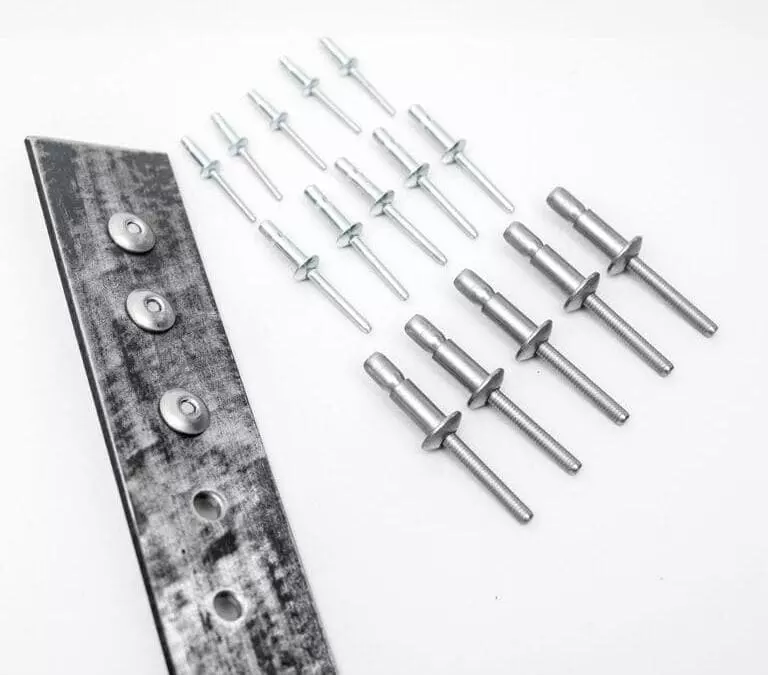
- Structural Load Bearing
Monobolt adopts a thickened rivet body and lock core structure design, capable of withstanding higher shear and tensile loads. Compared with traditional blind rivets, its load-bearing capacity is increased by approximately 40–60%, ensuring the stability of structural connections under high-stress conditions. - Locked Mandrel System
After riveting is completed, the mandrel is permanently locked in the rivet body to prevent loosening caused by vibration. This design significantly enhances the anti-seismic and anti-fatigue performance, which is a key advantage in mechanical equipment and automotive structures. - Sealed Design
The sealed tail and precise forming process endow Monobolt with excellent waterproof, dustproof and anti-corrosion performance, making it highly suitable for use in automotive chassis, ship structures and outdoor equipment. - Consistent and Maintenance-Free
Monobolt can achieve high consistency in batch assembly through hydraulic or pneumatic installation tools. Its structure does not require secondary tightening or maintenance, making it suitable for automated production lines and long-term use environments.
Monobolt Rivet vs Standard Blind Rivet
| Comparison Item | Monobolt Rivet | Standard Blind Rivet |
|---|---|---|
| Strength Level | High structural-grade strength (designed for heavy-duty applications) | Medium strength (used for light-duty assemblies) |
| Mandrel Structure | Mandrel fully locked inside the rivet body, prevents loosening | Mandrel breaks off after installation, limited vibration resistance |
| Vibration Resistance | Excellent, suitable for vibration and impact environments | Moderate, may loosen under prolonged vibration |
| Waterproof Sealing | Superior, features a sealed tail design | Average, not designed for waterproof applications |
| Typical Applications | Industrial structures, high-load joints, outdoor equipment | Sheet metal, home appliances, electronic assemblies |
| Cost | Slightly higher (due to complex structure) | Lower, ideal for high-volume production |
If your project requires a connection that is long-lasting, stable, shock-resistant, anti-loosening, and corrosion-proof – such as for automotive chassis, steel structures, or wind energy equipment – Monobolt Rivet is the better choice. For the assembly of lightweight sheet metal or decorative parts, standard blind rivets remain the cost-effective solution.
Industrial Applications of Monobolt Rivets
Automotive & Trucks
Monobolt Rivet is widely used in high-stress areas such as car frames, chassis and cargo boxes. Compared with traditional welding, it can provide higher shear strength and vibration stability.
Meanwhile, structural bolting does not require a heat-affected zone, which can avoid metal deformation and fatigue cracks. In new energy vehicles and lightweight body-in-white designs, Monobolt has gradually replaced some welding points.
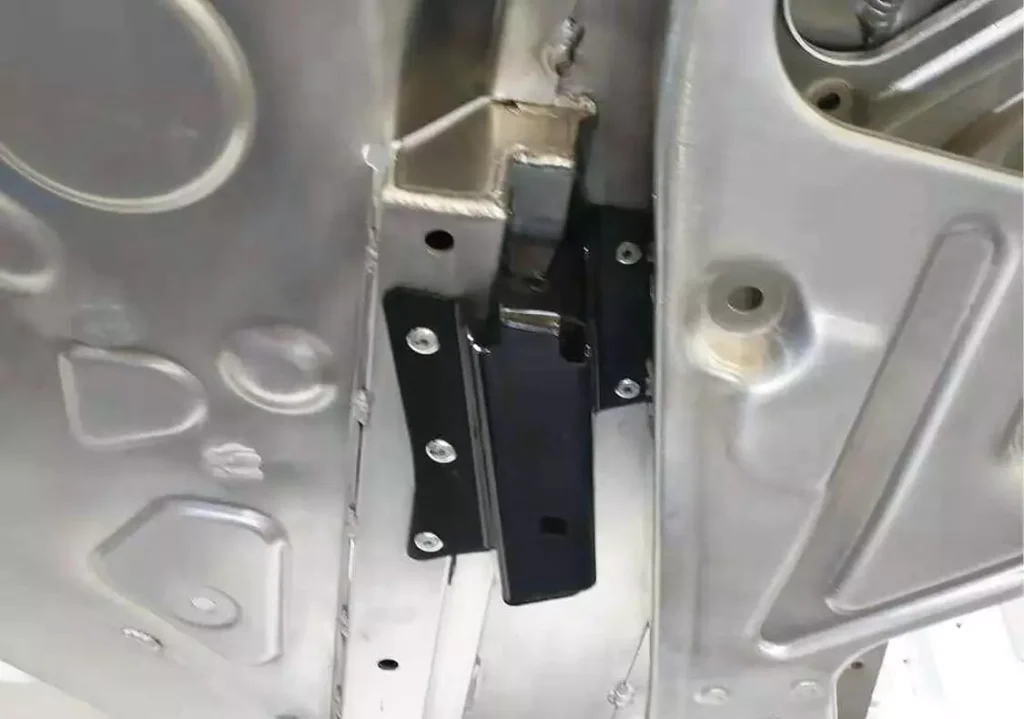
Railway Vehicles
In the manufacturing of rail vehicles, Monobolt rivets are used to connect the vehicle body frame, floor frame and door structure. They can withstand long-term vibrations and cyclic loads, and meet the structural strength standards of EN 15085 and VDA 239-100.
Construction & Infrastructure
The structural requirements of buildings and bridges demand that the connecting components possess high shear strength and weather resistance. The lock core design of Monobolt Rivet can maintain the stability of the connection in high-load environments. Meanwhile, the stainless steel or coated versions can prevent corrosion from wind and rain, with a service life exceeding 25 years. In the assembly of steel structures and the support of curtain walls, Monobolt nails can achieve a faster installation efficiency compared to bolts.
Wind & Energy Systems
Wind turbine towers, support arms and motor housings are often exposed to strong vibrations and high humidity environments. Monobolt Rivet has excellent vibration resistance and waterproofing properties, making it an ideal alternative to bolt connections. Its stable mechanical locking structure can maintain zero loosening under high wind loads, ensuring the long-term safe operation of the equipment.
Marine & Offshore
The marine environment has extremely high requirements for the anti-corrosion performance of fasteners. It is widely used in aluminum ships, offshore platforms and coastal facilities, providing long-term waterproof, salt-proof and shock-proof fixation effects.
Choosing the Right Material for Monobolt Rivets
| Material | Key Features | Typical Applications |
|---|---|---|
| Aluminum Alloy | Lightweight, anti-oxidation, and corrosion-resistant; ideal for lightweight assembly requirements. | Light structural components, aluminum vehicle bodies, and household appliance enclosures. |
| Steel (Zinc-Plated) | High tensile and shear strength with excellent cost performance. | Machinery equipment, steel structure assembly, and construction supports. |
| Stainless Steel (304/316) | Superior corrosion and fatigue resistance; suitable for high-humidity and salt-spray environments. | Marine vessels, railway vehicles, outdoor facilities, and energy systems. |
| Monel / Nickel Alloy | Excellent high-temperature and corrosion resistance; ideal for marine and aerospace applications. | Offshore platforms, aerospace structures, and chemical processing equipment. |
- When choosing Monobolt Rivet, the electrochemical compatibility of the substrate should be given priority consideration to avoid intermetallic corrosion.
- For outdoor or salt spray environments, it is recommended to use the 316 stainless steel or nickel alloy version to ensure that the connection lasts for more than 20 years.
- For lightweight or aluminum structures, the aluminum alloy rivets can be selected in combination with anti-corrosion sealing washers to achieve a balance between structural strength and protection.
How to Install a Monobolt Rivet?
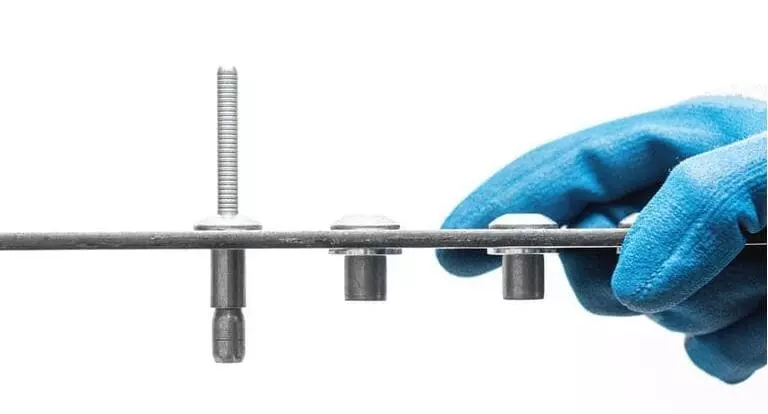
① Drilling the Hole
Before installation, it is necessary to ensure that the surface of the workpiece is clean, free of oil and oxide layer. Use high-precision drill bits to drill holes on two or more layers of connecting pieces. The hole diameter should be approximately 0.1–0.2 mm larger than the diameter of the rivet body. For example, when installing a 6.4 mm diameter Monobolt, the hole should be drilled at 6.5–6.6 mm. This small gap ensures that the rivet can smoothly insert into the hole and also prevents the material in the clamping area from being deformed.
② Inserting the Rivet
Insert the Monobolt Rivet into the pre-drilled hole, ensuring that the cap part is perfectly flush and perpendicular to the surface of the workpiece. The cap part should make a smooth contact with the material without any inclination or uplift. Inclined installation will result in uneven expansion of the tail end, reducing the shear strength and possibly damaging the sealing effect.
③ Setting the Rivet
To install Monobolt Rivet, a structural riveting gun such as the Rivmate HydroLock series hydraulic pull riveting gun must be used. This tool pulls the core shaft outward through hydraulic or pneumatic force, while forcing the rivet body tail to expand radially within the hole.
When the mandrel breaks automatically under the set pulling force (usually 8–12 kN), it indicates that the rivet has been correctly installed.
④ Inspecting the Joint
After the installation is completed, an inspection of the appearance and structure should be carried out to ensure that each rivet meets the standard requirements.
The key points for inspection are:
- The hat cap is firmly attached to the surface, without any frayed edges, tilting or gaps;
- The tail has a full and symmetrical bulging shape;
- The core shaft is broken smoothly, without exposed sharp corners;
- If it is a waterproof structure, it must pass air-tight or water pressure tests.
⑤ Post-Installation Maintenance
Although Monobolt Rivet is a type of maintenance-free structural fastener, it is still recommended to conduct regular inspections of key connection points in long-term outdoor or high-vibration environments.
- Conduct an appearance inspection on high-load areas every 12 months;
- If any looseness, corrosion or deformation is found, replacement should be carried out immediately;
- Use the original Rivmate Monobolt to maintain consistent connection and lifespan.
FAQ
What is a Monobolt Rivet used for?
The Monobolt Rivet is a type of high-strength structural blind rivet, commonly used in engineering applications that require permanent and high-load connections. Typical applications include: automobile chassis, rail vehicles, building steel structures, wind power equipment, and mechanical frames. It can withstand both high shear and high tensile forces simultaneously, making it particularly suitable for replacing welding or bolt connections, thereby enhancing assembly efficiency and vibration resistance stability.
Are Monobolt Rivets Waterproof?
Yes. The Monobolt Rivet is designed as a sealed structure. The core shaft is completely locked inside the rivet body, forming a sealed cavity. This feature enables it to effectively prevent liquid, gas or dust from entering the connection point. Therefore, it exhibits excellent waterproof performance in exposed environments such as ships, vehicle chassis, and outdoor equipment.
Can Monobolt Rivets replace welding?
In most structural applications, Monobolt Rivet is an ideal alternative to welding. Its installation process requires no heat input, does not cause thermal deformation or affect the performance of the substrate, and is particularly suitable for connecting dissimilar metals (such as aluminium + steel).
In addition, the structural strength of Monobolt can reach 12kN (for the 6.4mm specification), which is comparable to or even higher than that of spot welding. It also supports an automated assembly system, significantly reducing the need for manpower and the complexity of the process.
What Tools are Used for Monobolt Rivets?
Installing Monobolt requires a dedicated structural hydraulic or pneumatic riveting gun. Rivmate recommends using the C Series Pneumatic Rivet Gun.
For automated production lines, a robot feeding and positioning system can also be configured to achieve high-speed and high-precision assembly.
Are Monobolt Rivets Reusable?
No. Monobolt Rivet is a type of permanent fastener, and once installed, it cannot be removed or reused. If removal is necessary, drilling must be used. This irreversibility is precisely what guarantees its high strength and anti-loosening performance, ensuring that the connection point remains stable and reliable under long-term loads and vibrations.
Strengthen Every Structure with Rivmate Monobolt Rivets

The Monobolt Rivet is a proven high-strength structural fastening system that can provide stable and long-lasting connection performance in high-load, vibration, humid or corrosive environments. It combines the strength of welding with the efficiency of riveting, without the need for heat treatment or complex processes, and is highly suitable for applications in automobile manufacturing, railway structures, building steel structures, wind power equipment and marine engineering.
Monobolt series of Rivmate has undergone multiple international standard validations (such as ISO 15973 / ASTM F2281). It not only ensures that the tensile and shear strengths reach the industry-leading level, but also possesses excellent anti-loosening and waterproof capabilities. It is an ideal choice for modern industrial assembly.
Visit the Rivmate website to obtain the Monobolt Rivet series product catalog, installation guide and material data sheet.
You can also contact the Rivmate technical and sales advisory team to obtain customized fastening solutions and sample support for automotive, rail, construction or energy applications.
Reference

How to Rivet Metal to Wood?
How to Rivet Metal to Woo

What Is Riveting in Metal Work?
What Is Riveting in Metal
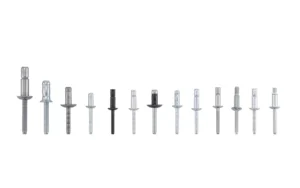
What Metal Are Rivets Made Of
What Metal Are Rivets Mad
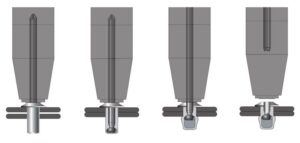
How to Rivet Metal to Metal
How to Rivet Metal to Met



